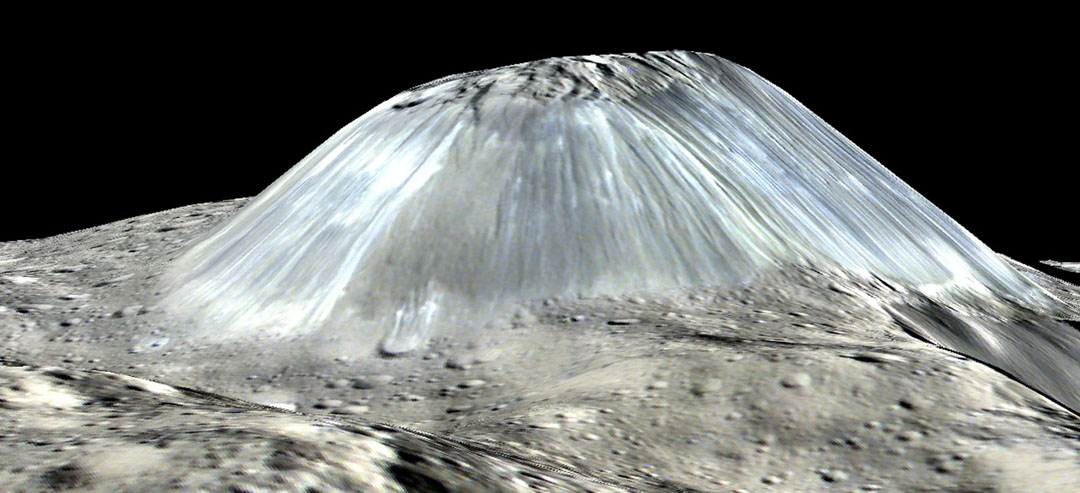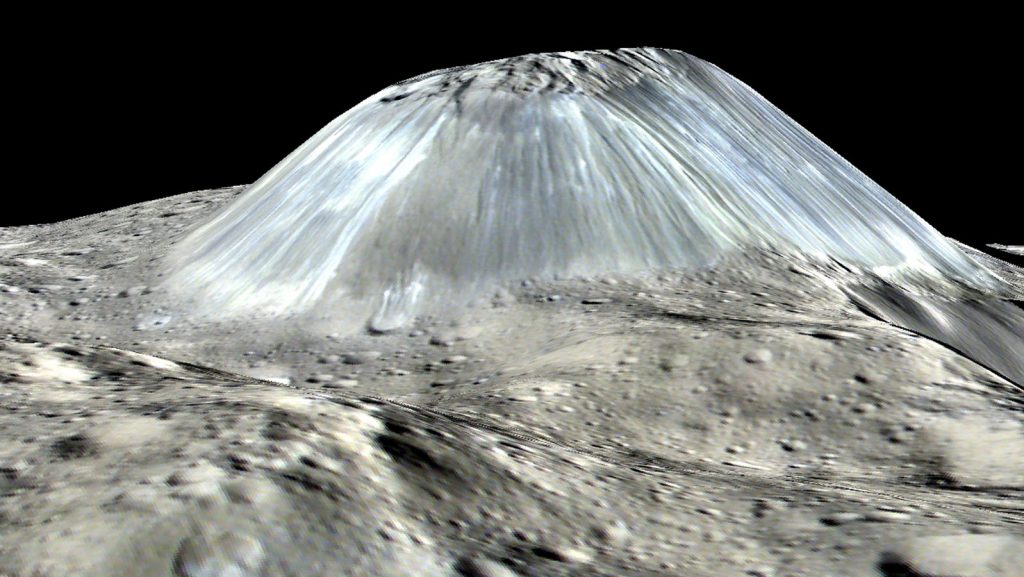
An isolated 3-mile-high (5 km) mountain Ahuna Mons on Ceres is likely volcanic in origin, and the dwarf planet may have a weak, temporary atmosphere. These are just two of many new insights about Ceres from NASA’s Dawn mission published this week in six papers in the journal Science.
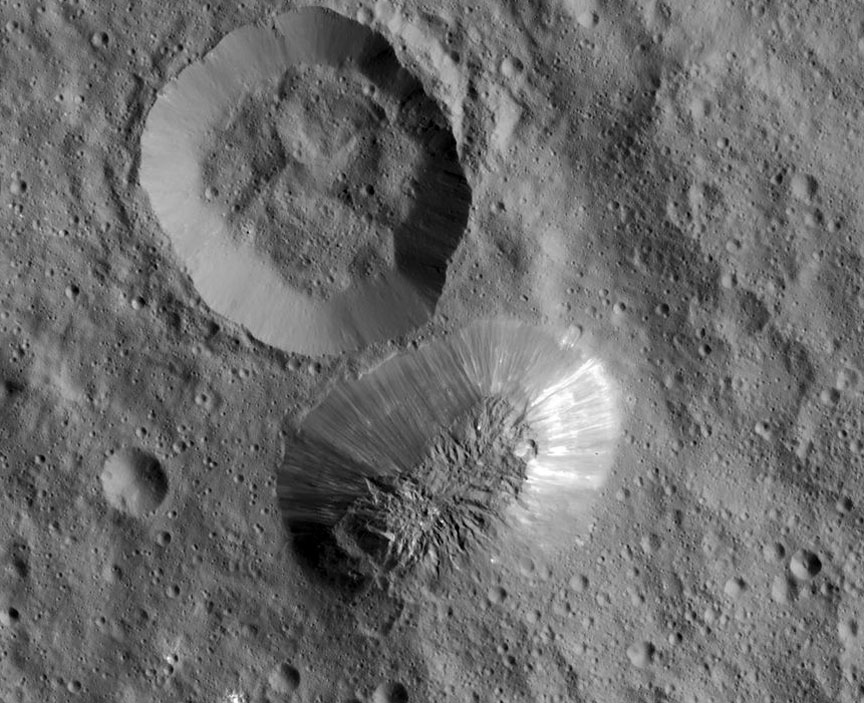
Credits: NASA/JPL/Dawn mission
“Dawn has revealed that Ceres is a diverse world that clearly had geological activity in its recent past,” said Chris Russell, principal investigator of the Dawn mission, based at the University of California, Los Angeles.
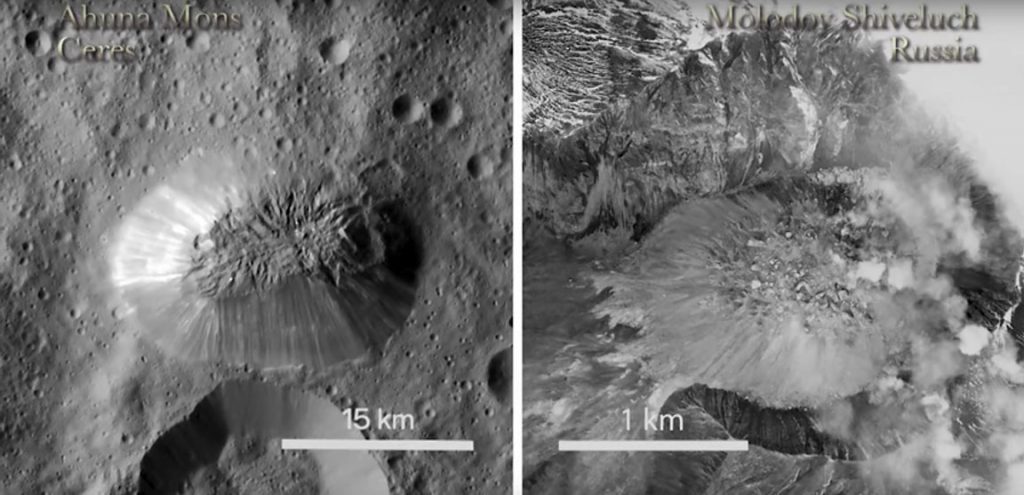
Ahuna Mons is a volcanic dome similar to earthly and lunar volcanic domes but unique in the solar system, according to a new analysis led by Ottaviano Ruesch of NASA’s Goddard Space Flight Center and the Universities Space Research Association. While those on Earth erupt with molten rock, Ceres’ grandest peak likely formed as a salty-mud volcano. Instead of molten rock, salty-mud volcanoes, or “cryovolcanoes,” release frigid, salty water sometimes mixed with mud.
Learn more about Ahuna Mons
“This is the only known example of a cryovolcano that potentially formed from a salty mud mix, and that formed in the geologically recent past,” Ruesch said. Estimates place the mountain formation within the past billion years.
Dawn may also have detected a weak, temporary atmosphere; the probe’s gamma ray and neutron (GRaND) detector observed evidence that Ceres had accelerated electrons from the solar wind to very high energies over a period of about six days. In theory, the interaction between the solar wind’s energetic particles and atmospheric molecules could explain the GRaND observations.
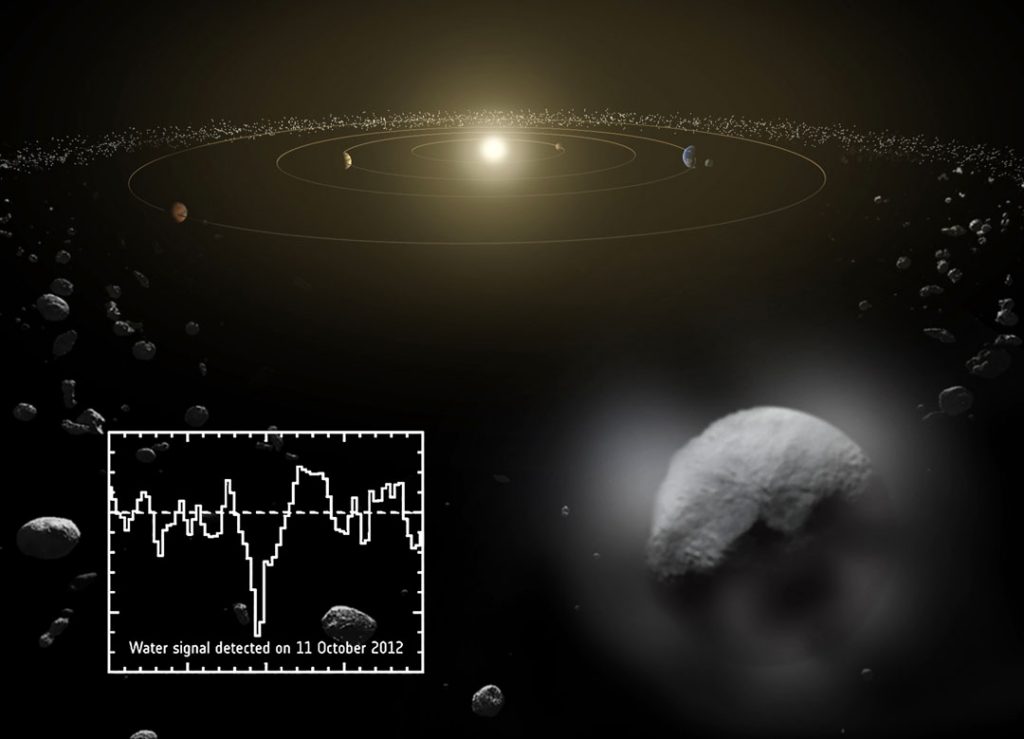
A temporary atmosphere would confirm the water vapor the Herschel Space Observatory detected at Ceres in 2012-2013. The electrons that GRaND detected could have been produced by the solar wind hitting the water molecules that Herschel observed, but scientists are also looking into alternative explanations.
While Ahuna Mons may have erupted liquid water in the not-too-distant past, Dawn found probable water ice right now in the mid-latitude Oxo Crater using its visible and infrared mapping spectrometer (VIR).
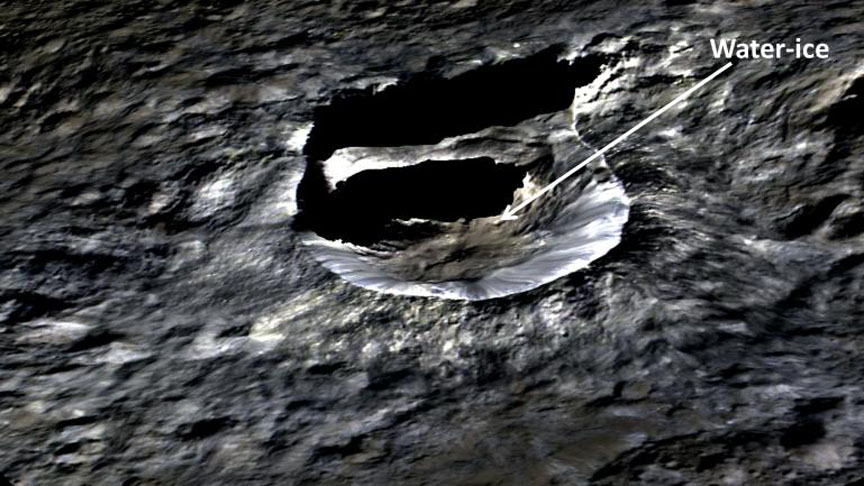
Exposed water-ice is rare on the dwarf planet, but the low density of Ceres — 2.08 grams/cm3 vs. 5.5 for Earth — the impact-generated ice detection and the the existence of Ahuna Mons suggest that Ceres’ crust does contain a significant amount of water ice.
Impact craters are clearly the most abundant geological feature on Ceres, and their different shapes help tell the complex story of Ceres’ past. Craters that are roughly polygonal — shapes bounded by straight lines — hint that Ceres’ crust is heavily fractured. In addition, several Cerean craters display fractures on their floors. There are craters with flow-like features. Bright areas are peppered across Ceres, with the most reflective ones in Occator Crater. Some crater shapes could indicate water-ice in the subsurface.
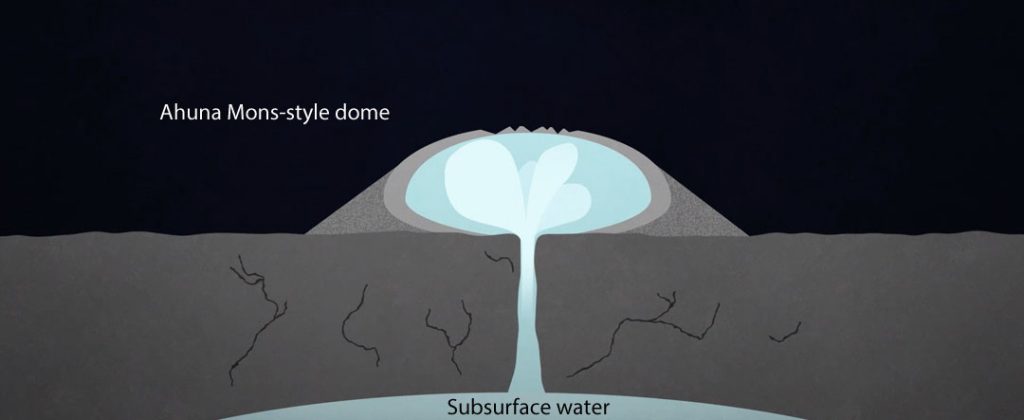
All these crater forms imply an outer shell for Ceres that is not purely ice or rock, but rather a mixture of both. Scientists also calculated the ratio of various craters’ depths to diameters, and found that some amount of crater relaxation must have occurred as icy walls gradually slump.
“The uneven distribution of craters indicates that the crust is not uniform, and that Ceres has gone through a complex geological evolution,” Hiesinger said.
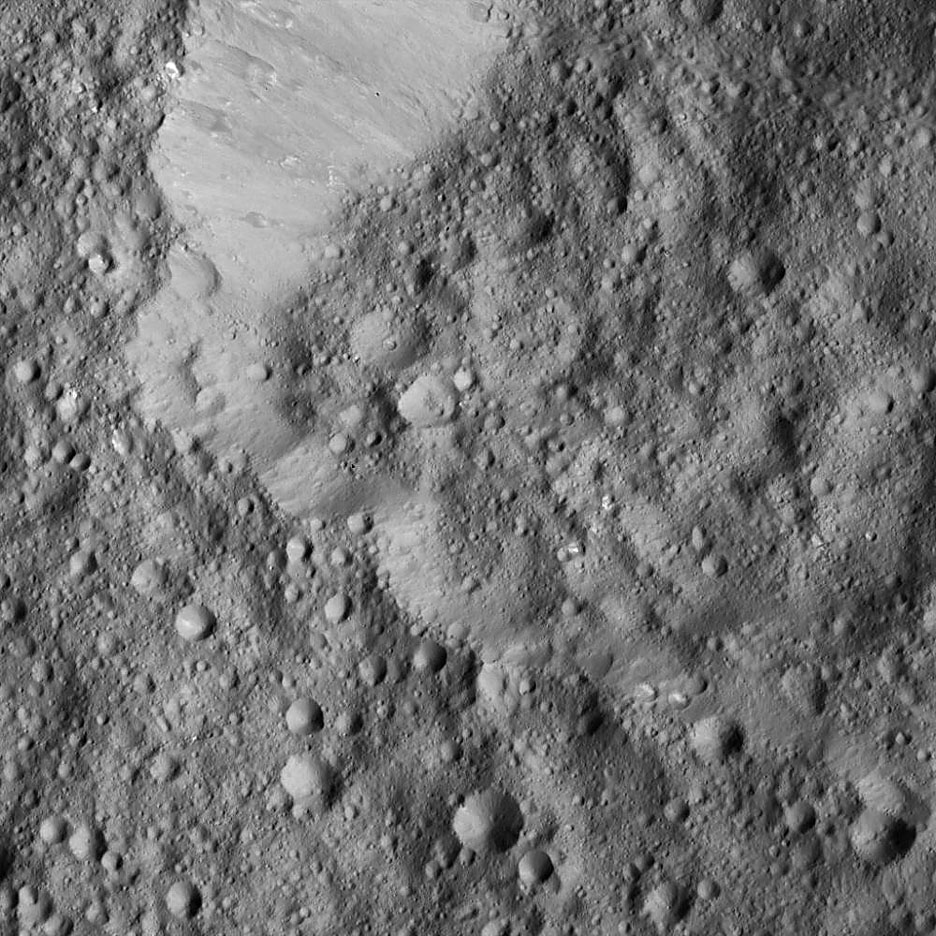
Ceres’ crust also appears loaded with clay-forming minerals called phyllosilicates. These phyllosilicates are rich in magnesium and also have some ammonium embedded in their crystalline structure. Their distribution throughout the dwarf planet’s crust indicates Ceres’ surface material has been altered by a global process involving water.
Now in its extended mission, the Dawn spacecraft has been increasing its altitude since Sept. 2 as scientists stand back once again for a broader look at Ceres under different lighting conditions now compared to earlier in the mission.

